Jasmina Tacheva talks with the Macedonian-Australian New York based actor Tony Naumovski
Tony Naumovski – “a Macedonian-Australian New York based actor”. Wow, this introduction describes not just your profession – it reveals a real adventure!
You were born in Sydney, spent your childhood in Macedonia, graduated from the National Academy for Theatre and Film Arts in Sofia, Bulgaria, got your Master’s degree from the University of New South Wales, Sydney, received a full year scholarship by Ms. Anna Strasberg, have attended numerous master classes, workshops, seminars and lectures of/with the greatest names in theater, and now live and work in New York City. How did this long and diverse journey shape you as a person and an actor? What aspects of these amazing cultures were most appealing and inspiring to you?
The great theater director Ariane Mnouchkine once said to me, in Sydney, ‘You never know what your influences are: scenes in the street or something you see or hear or read’ etc. There have been so many aspects of these very distinct cultures that have influenced me in various ways and levels.
I am only grateful for the life time opportunity to have lived, worked and educated myself in all these wonderful corners of the world. But yet there is one factor that is unparalleled and superior to the rest, that is the human being. The people I have met over the years are thousands from every walk of life.
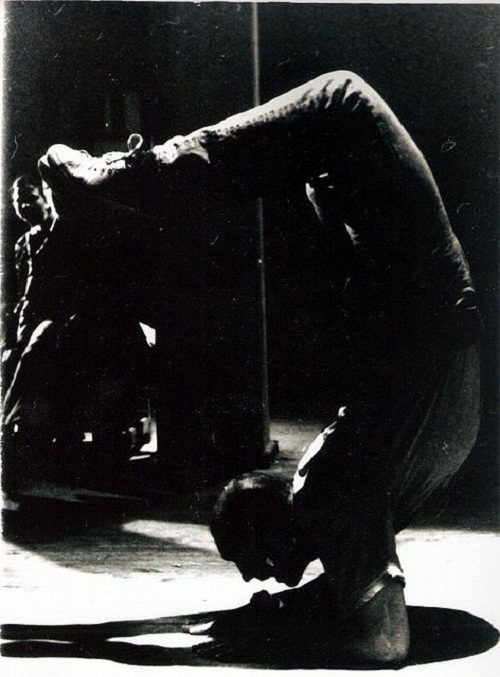
Photo: Tony as Scorpio
I love people, I love meeting and interacting and learning from other individuals, cause in a way no matter what culture you come from, you are your own ‘individual culture’. So that power that people carry within them, the mileage of life and that exchange of experience is the strongest element to have had influence on me.
I consider myself very rich to have made friends, colleagues and acquaintances from almost every single country in the world. To have touched upon at least a tiny slice of their cultures, through that single human being coming from that specific part of the world. I believe: life without education is very hard, life without money is even harder, but life without friends is NO life.
My shape as a human being changes on daily basis, based on everything that surrounds me, especially with the dynamic life we live in New York City, literary every single minute is a new endeavor. It is very important to me to be free and open and welcome those changes that reshape me and keep sculpting me and my future, cause if I am closed, I would not even give a chance to see what life has got in store for me.
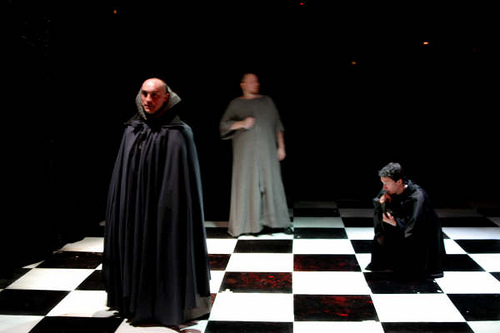
Photo: “Hamlet”: The Ghost (Tony Naumovski), Claudius (Roger Dale Stude) and Hamlet (Joseph C. Yeargain)
How did you first become interested in theater and when did you realize you want it to be your life path?
I was a drummer and singer for a long time before I finally decided to pursue acting. Coming from a family of musicians, I grew up singing. The first steps of performance came through the music and later when I was about 12, I had some sort of few theatrical experiences.
The shifting point came when I was cast as a policeman in this very tragic show, that I was appearing at the very end and had only a couple of lines, but apparently I made such an impact by using this very local funny village dialect, that it was a ‘grand success’.The theater house was full capacity of 1000 people, it was spectacular.
When I turned 16 I found myself on a crossroad deciding between music and drama, it was a hard one, then I decided I will pursue acting. I thought I could always incorporate the music into my acting career which I actually do very often.
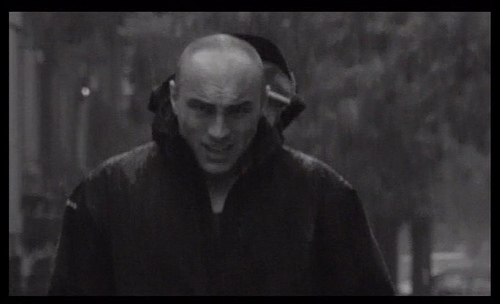
Photo: Tony as Mikel
‘I am of the opinion that my life belongs to the whole community and that as long as I live, it is my privilege to do for it whatever I can…I want to be thoroughly used when I die, for the harder I work, the more I live’ – This quote by George Bernard Shaw is on the Welcome Page of your website. Is this your motto in life? What part of acting is natural talent and what part – hard work?
This is my motto in life, for what is the point otherwise? I work on myself every single day and wake up with the question: How can I be a better person today? How can I give more without expecting anything in return?
I believe natural talent is 10%, IF that much? The rest is work. Acting is what defines me, who I am, what I am and why I am. Often people ask me what the formula of my success is. The answer is very simple: work, work, and more work and it works actually.
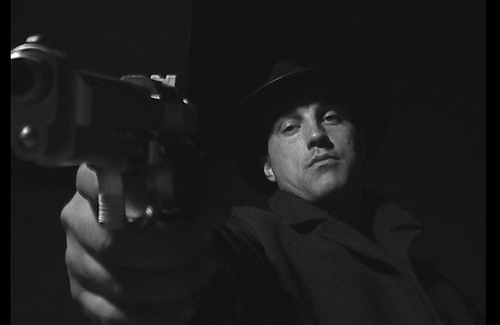
Photo: The Dreaming: The Man
Your personality is a meeting point of the unique Balkan spirit and the remarkable values of Australia and the United States such as the appreciation of diversity, the love of freedom and diligence, etc. How do these variegated facets get along within you?
GREAT I LOVE it, I feel privileged. I often like to think of myself as a gypsy, a nomad who belongs everywhere and nowhere at the same time, a free spirit and mind whose body is just a tool of changing the geography of life very often.
That is the same element I am trying to incorporate more and more in my acting and my music too. I love when people ask me after hearing my singing if I am a gypsy, that is the biggest compliment. Oh boy I am such a lucky human being who ‘cycles’ around the planet 🙂 I love this planet.
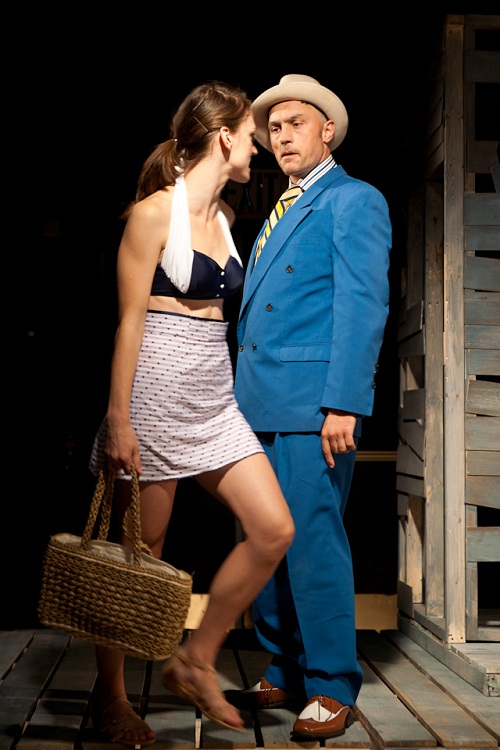
Photo: ”Something Cloudy, Something Clear” – Bugsy Brodsky
Where do you feel most at home or do you consider yourself a world citizen?
I do consider myself a citizen of the world. Although I never forget where I come from and what my roots are cause ‘a tree without a root does not exist’.
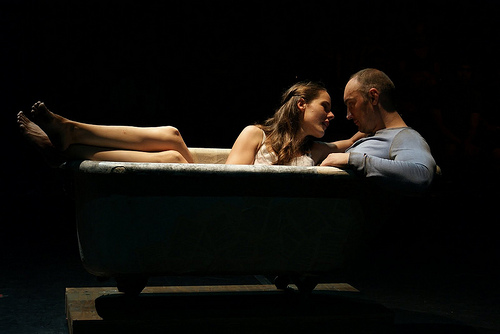
Photo: OD@C (the Odyssey-Odysseus + Circe)
Throughout the years you have worked with some of the biggest names in the field of theater in America, Europe and Australia. Could you share with us your personal observations – are the three places still autonomous theater territories, each with its own idiosyncratic features, or have the boundaries between them begun to fade?
Yes and no. For people like the late Ellen Stewart aka LaMaMa, Peter Brook, Grotowski, Judith Malina, Richard Schechner, Eugenio Barba, Naum Panovski to name a few, the Globe is the stage for their art. Each one of them, in their own way, have contributed to breaking the boundaries of traditional theater, traditional casting, culture, ethnicity, gender, sex, sexual orientation, etc. without erasing the most sacred values of the individual’s identity.
I know of many and believe there are a lot more people aspiring toward that kind of art. That is to aspire to larger freedom, because the identity of the world has changed. We live in a global society, in a world of fast communications and social media. But unfortunately there is a great amount of people who are still sticking to the ‘good old same’. The fear of change is a big issue and a very limiting element in some people which is very sad.
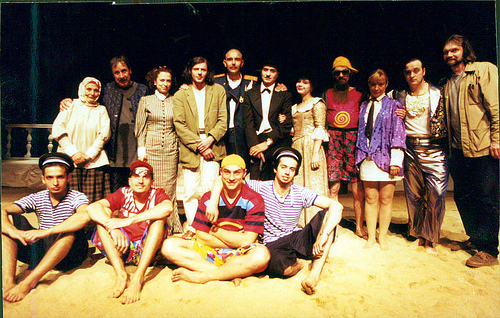
Photo: “Love in Krim”: A group photo of the cast
Especially for the artists who should be the ones to paint the ‘vision of the future’ and pull the society forward and evolve. But there is still a lot more work to be done in that direction, for some things it will take few hundred years for us to understand and accept. For certain people some things will never change and they would not like them to change and maybe that is how it should be, I don’t know?
In terms of breaking the boundaries in every aspect in the theater art, New York is the perfect example of the independent theater movement for which not many people are familiar with. New York has close to 1000 theater companies and most of them are actually part of that independent movement aka Off-off Broadway, the innovative if you wish, where brave talented young people are fearlessly diving into the unknown and explore the possibilities of endless opportunities. I have seen some of the most brilliant theater in places of 20 people audience and places do not even resemble a theater.
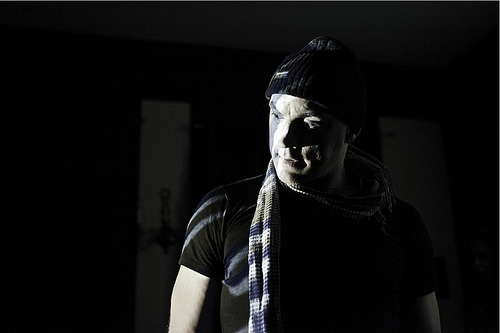
Photo: “Don’t Take the Bridge” – Tony as Sam; Photocredit: Anya Roz
About “Don’t Take the Bridge” – Mayia Pramatarova’s latest play – she says you were the first to give feedback after you read the script – what did you like about it and why did you decide to join the project?
Maiya is not a traditional writer. She offers freedom within the prison of the characters. Her writing provokes. When I read ‘Don’t take the bridge’, I immediately connected to it and thought wow, let’s do it. So it was an easy YES for me.
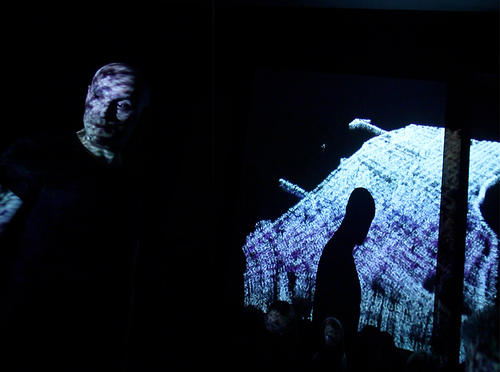
Photo: onewaytheater.us: Don’t Take the Bridge by Mayia Pramatarova. Staged reading. Director Stavri Karamfilov.
Photocredit: Arkady Ugorsky
You play the role of Sam – a fundamental character in this play. What can you tell us about him – about his fears, hopes and dreams – how do they correspond to yours? Imagine you met Sam on the street – what would you tell him?
Sam is a human being who aspires to freedom as most of us humans do, whatever that means, in whatever manner each human being exercises it. The fears of Sam is the today’s society. Sam lives in the world of Madlen and her stories. One better world, in his mind and one better time, the world of art and theater.
That is where Sam find his freedom, in his imagination and yet he is a prisoner to himself, for the reality of the everyday life is very different. He hopes for the past, not the future and dreams of a romantic bohemian fantasy world.
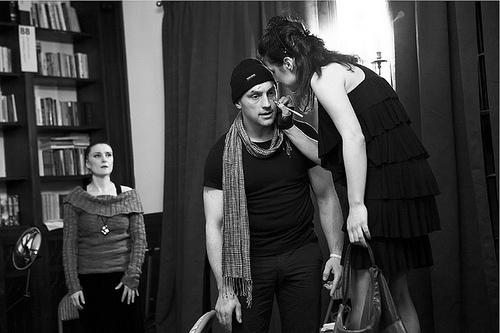
Photo: “Don’t Take the Bridge”; Photocredit: Anya Roz
I am very much the opposite actually, but yet what intrigues me is what the character I play informs me about myself? There must be a reason why I play this character. How does this character resonates with me? Is it in the parts I don’t know about myself? It becomes a little scary when you think of it that way.
How does it make me understand and accept myself better tomorrow, and be a better person? Does a part of me live in a fantasy too? That is why the play is great. It has several layers that have several more layers within. If I saw Sam in the street I would not say anything, but take him for a bungee jump.
Photo: Tony Naumovski* as Stalin and Michael Goldsmith as young man in Otho Eskin’s “Final Analysis”. Photo by Joan Marcus.
As you walk down the streets of New York, do you feel the highly creative spirit of the memorable times in American history when the arts experienced an incredible revival (for instance, the Harlem Renaissance) on the one hand, and the hectic atmosphere of the city that never sleeps, never takes a break and never stops spinning? How do you feel here? Have you ever felt lost or uneasy before this never-ending roller coaster, like Sam?
This is where I belong. New York is where I feel most alive and useful for the society. This is me. I do feed of everything that surrounds me in this capital of the world, and there is so much to learn from, so much to be inspired by. I actually live in Harlem and I adore it. In New York you don’t walk, you fly, and I rather die flying than relaxing.
Yes I have felt lost, who hasn’t? I once shared that with Liza Minnelli, I said, Ms. Minnelli, sometimes I feel lost and I doubt things and myself and I go into weird places in my mind, and she said ‘That’s OK darling, That is the point, that’s how you know you progress, you grow, otherwise you don’t evolve’. So there is a bit of Sam in each one of us more or less.
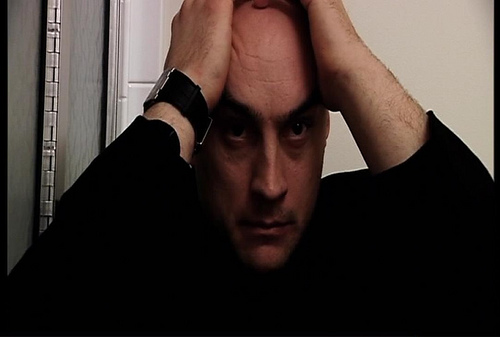
Photo: “The Weight of a Kiss” – Tony as the Husband
What are the things you like most about NYC?
The endless opportunities of life in art and life in general. The masses of people from the entire planet. The energy that is a like rocket pushing you forward. The hurricanes of emotions. The oceans of inspirations, even the air is inspiring and ambitious 🙂 The soundscapes of languages.
The fact that you can see a 3 year old at 4am in the subway with her parents or a homeless person reading The Little Prince at 3am. The smell of future. The sense of purpose. My friends and Central park too (this is the short list :).
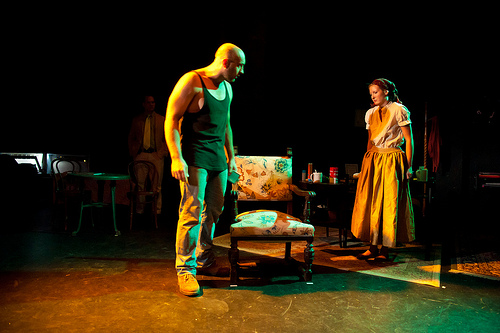
Photo: “Butterfly”-Richmond Shepard Theatre; photo by Alexandar ‘Sasha’ Karasev
Besides acting, you are involved in writing about theater and also in translating – can we expect to see you in the light of a director/producer/critic sometime soon then?
I honestly don’t know. I have been offered to direct but I am hesitant. I would like to stick to the acting, although many respectable people from the industry have told me that I would do very well as a director too. Producer yes, but only for some selected productions like the upcoming Lissabon by the fantastic Zachary Karabashliev, that we together with him and another incredible colleague of ours – Hristo Hristov, will mount on the main stage in 2014.
As for critic maybe, if people ask me to. I have written few essays on theater and have few rough cuts of more essays about acting, life in art-philosophy but I don’t rush with those, because everything changes all the time.
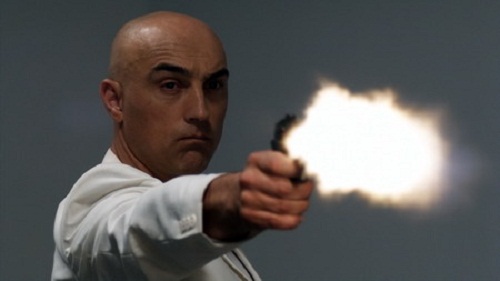
Photo: “This Is not an American Movie”
You are active not just on the stage but also in cinema/TV. In your view, how do these forms of visual art differ? What are your favorite aspects about each one of them?
In a way they are the same thing, and they expect the same from you, depth, clarity, precision and truth. The difference is that if you are in the theater you need to ‘walk the tight rope few meters up there in front of the audience and the focus and concentration of you must be 100 percent so you don’t fall and kill yourself’ (it is a matter of life and death, as acting is for me).
In cinema the same ‘rope’ would be a drawn line in the studio with a green screen behind you but now you got the cameras into your face so again you have to give 100 percent cause every single unjustified blink and move of muscle, the camera will register, but then you can have take two. The most important is that they come from the same place.
My most favorite aspect in theater is the audience and the fact that I can’t wait to do the show and recreate it again the next day. In film, the fact that your performance is printed forever in the history of cinema.
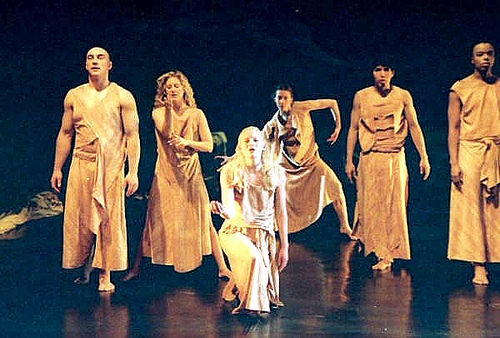
Photo: “Skins”
Last week was the World Premiere of “FINAL ANALYSIS”. Could you tell us a bit more about this incredible theater project featuring such interesting characters as Sigmund Freud, Gustav Mahler, and of course your own character – Stalin?
This is an incredible story written by Otho Eskin who by researching the life of the great composer Gustav Mahler and his wife Alma, got enchanted by the magic of Vienna in the 1910s. So as the story goes one thing leads to another for him to decide and bring several of the most important men of the time into one café where they meet.
Freud, Gustav Mahler, Alma Mahler, Wittgenstein, Stalin and a strange young man (Adolf Hitler), have a meeting point where the Viennese waiter (as a story teller) welcomes them and serves them. Then as the waiter says at one point in the play ‘You will have to use your imagination’ of what happens next 🙂
Stalin is such a controversial figure. Nowadays Russia half people think of him as a villain half a great leader. Anyhow, this Stalin is not yet the one we know from the later history. I have the honor and privilege to put a signature to the younger version of Stalin, the one very little known to the world, especially in the US.
After robbing an equivalent of 3.6 million US dollars today’s currency, Stalin takes a refuge in Vienna, where he meets with Alma who is attracted by his rough dangerous nature and flirts with him for a bit, soon to realize that they are not a match in any way after all. In the same cafe Stalin meets Hitler as a young lost soul, rejected by everyone and inspires him to stop being an artist and join the revolution.
Stalin says ‘You can be a warrior in army that will sweep the world clean of the filth you despise; I see it in your eyes’. Little bit of encouragement from Stalin, bit from Freud who is the last to analyses Hitler, a lot of rejection from everybody and a lot of rage made him, who we know very well.

Photo: “Three Graces” – Tony as Cengiz Pasha
at the Ice Factory Theater Festival 2011
Post Scriptum
Jasmina Tacheva asks Mayia Pramatarova three questions to show the actor Tony Naumovski from a different angle
Jasmina Tacheva: Did you see Tony Naumovski in his latest play, “Final Analysis”?
Mayia Pramatarova: Yes, I watched the play. It was shown during the Midtown International Theatre Festival and it attracted me with the name of its director – Ludovica Villar-Hauser – one of the leaders among the women involved in professional theater in New York. Ludovica has a European background and it’s no coincidence that she got interested in the script of Otho Eskin.
The action takes place in Vienna, at the beginning of the last century, and the viewer is invited to a typical café whose walls show screenings nostalgically sending us back to the time of the agonizing Austro-Hungarian Empire which has created a variety of especially brave and extreme intellectual ideas that have fed the entire 20th century.
The characters are Freud, Gustav and Alma Mahler, the young Wittgenstein, the young Hitler and Stalin whose role is played by Tony Naumovski. Tony does not simply enter the action, he jumps into it with such energy and zeal, with such a sense of his character, that his scenes are remembered; they arouse laughter and are among the best in the performance in which many experienced artists like Stephen Bradbury are taking part.
JT: What qualities of Tony as an actor and a person have determined his outstanding creative path in New York?
MP: Tony is a very gifted person; he is not only a good dramatic actor, he also has a lovely voice. He has a very good sense of partnership on the stage. He is extremely concentrated and focused in the rehearsal process and is always prepared. Interestingly, ambitious artists like him are often relentless and strongly oppose other people’s opinion, while Tony is very open to good directing ideas and instead of arguing in vein, he is immediately ready to try.
JT: How did his work on the role of Sam in “Don’t Take the Bridge” go?
MP: He revealed a very important part of the character: the strength in Sam’s weakness. According to the play, the character is someone who has never left Manhattan, and love takes him out of his habits and inertias with a crash; it makes him more alive and at the same time – more vulnerable, as it pushes him to dark zones he hasn’t seen before.
Tony manages to build the nuances of these complex transitions together with his partner, Sergey Nagorny – according to the idea of the director Stavri Karamfilov, the two of them are to reveal both sides of the character as antipodes and doubles at the same time.
Tony is a gifted, well-educated and motivated person and I think that his major roles are ahead of him.

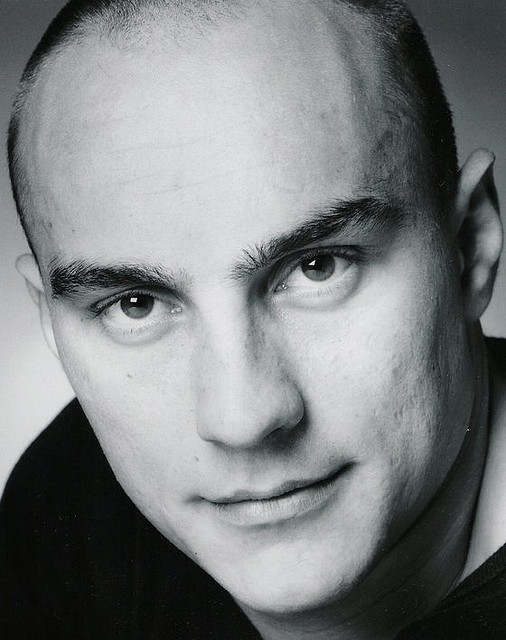










1 comment so far ↓
Nobody has commented yet. Be the first!
Comment